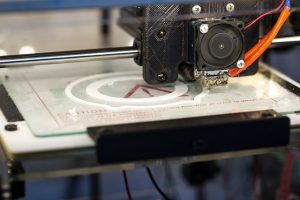
3D printing is revolutionizing the manufacturing industry. Research shows that prototyping, proof concept creation and production are the three most common uses, respectively, for 3D printers. Manufacturing companies use 3D printers to perform these essential processes. The size of a 3D printer, however, can vary depending on the specific type. While some 3D printers are large, desktop 3D printers feature a relatively small and compact size.
Overview of Desktop 3D Printers
A desktop 3D printer is a small 3D printer that’s able to build objects from raw material. They are known as “desktop 3D printers” because they fit on the surface of a typical desk. They don’t require a large and open space. Rather, desktop 3D printers are small and compact.
Advantages of Desktop 3D Printers
With their small size, desktop 3D printers are ideal for otherwise small workspaces. If a manufacturing company operates out of a small factory, it may not have the luxury of using a large 3D printer. Fortunately, desktop 3D printers offer a space-saving solution. They can fit on the surface of a desk, making them an attractive choice for small workspaces.
You might be surprised to learn that desktop 3D printers aren’t limited to consumer applications. While some consumers use them for recreational and leisure purposes, businesses — primarily manufacturing companies — use them as well. According to one report, 75% of all desktop 3D printers are used for commercial purposes, whereas only 25% of them are used for recreational and leisure purposes.
Desktop 3D printers also cost less than their larger counterparts. Large industrial 3D printers can cost tens of thousands or even hundreds of thousands of dollars. Desktop 3D printers, on the other hand, are available at a fraction of this cost. Many of them cost less than $1,000.
Disadvantages of Desktop 3D Printers
There are some disadvantages associated with desktop 3D printers. Most desktop 3D printers used fused filament fabrication (FFF) technology. There are other 3D printing technologies on the market. If a manufacturing company wants to use an alternative technology, it may need to invest in a larger commercial 3D printer.
Some desktop 3D printers are less accurate than larger commercial 3D printers. For applications in which precise shapes and sizes are required, a desktop 3D printer may prove ineffective. Of course, this doesn’t apply to all desktop 3D printers. There are sitll many highly accurate desktop 3D printers on the market. Nonetheless, commercial 3D printers are typically the most accurate.
